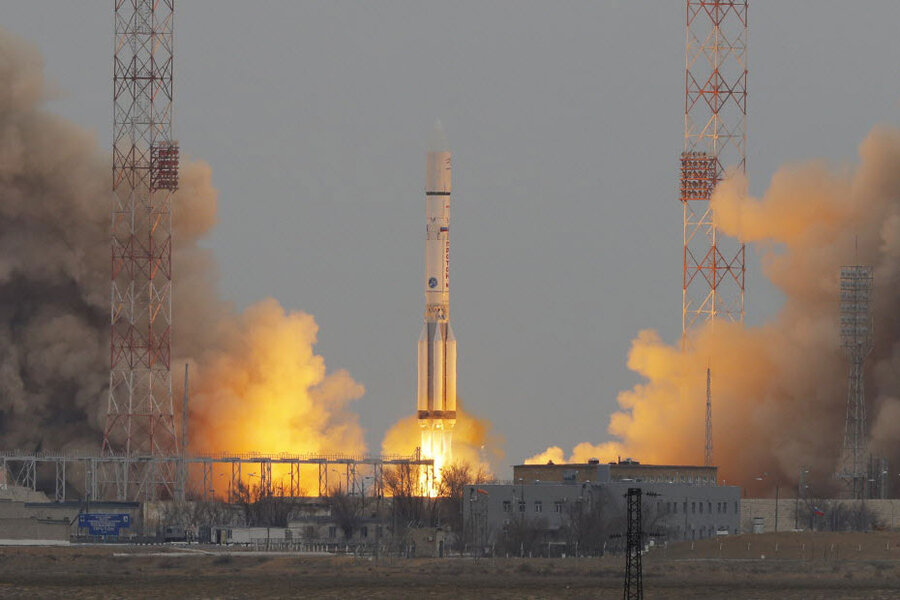ExoMars: A Euro-Russian mission headed to the Red Planet
Loading...
Traffic around Mars is about to get a bit heavier.
The European Space Agency and the Russian Federal Space Agency on Monday launched a probe in a joint mission to explore Mars. The mission, dubbed ExoMars, aims to bring humanity another step closer to setting foot on the Red Planet and perhaps discovering extraterrestrial life.
The spacecraft was blasted into space atop a Proton rocket from the Baikonur spaceport in Kazakhstan Monday at 5:31 a.m. Eastern time.
Atop the rocket is an orbiter to study the Martian atmosphere and a lander, Schiaparelli, that will serve as a prototype for the second phase of the ExoMars mission, a rover scheduled to launch in 2018.
It will take the ExoMars craft seven months to arrive at Mars. Schiaparelli and the orbiter will split off from each other three days before reaching the atmosphere of the Red Planet as the lander begins its descent trajectory.
Schiaparelli's main mission is to make a successful landing and test the technologies necessary to accomplish that. And doing so won't be easy. In 2003, the ESA's Beagle 2 lander went missing during a failed landing attempt as part of the Mars Express mission. As such, Shiaparelli is not equipped for much scientific exploration once it sticks a landing.
Meanwhile, the orbiter will join other satellites in Mars' atmosphere, including ESA's own Mars Express that is still going strong. Its task is to study life-hinting gases, such as methane, which is linked to life on Earth. Methane was already detected by previous Mars missions, but now the task is to determine whether it's coming from a geological or biological source.
"Essentially our spacecraft is a giant nose in the sky," Jorge Vago, an ExoMars project scientist based with the ESA told The Guardian. "We are going to use it to sniff out the presence of methane on Mars and determine if it is being produced by biological processes."
The United States' own space agency, NASA, has plans to launch a new Mars mission as well. The space agency's InSight mission (which stands for Interior Exploration using Seismic Investigations, Geodesy and Heat Transport) has faced delays but is currently set to launch in May 2018.
The goal of the InSight mission is to better understand the geological formation of Mars and other inner Solar System planets. The lander will be mounted with a seismometer so it can measure shakes and quakes deep below the Red Planet's surface to study the inside of the planet while exploring the surface at the same time.
This report contains material from The Associated Press and Reuters.








